International RiverFoundation remarks
Bill Dennison ·One of my favorite things to do in the world is to share these stories of people on convergent journeys, journeys like the one you are on with the Willamette River. The International RiverFoundation (IRF) promotes river restoration, protection and sustainable management of rivers and watersheds. Our vision is a world in which the rivers and watersheds are healthy and sustainably managed. This is a grandiose vision and we are a small organization, so we have selected a series of different activities and mechanisms to support that vision. First and foremost is the Riverprize, both the Theiss International Riverprize which you won this year, and the Australian Riverprize. We think the it is really important to celebrate best practice around the world. In addition to the Riverprize, IRF started a Twinning program, a scholarship program, a sponsored delegate program and a few select projects.
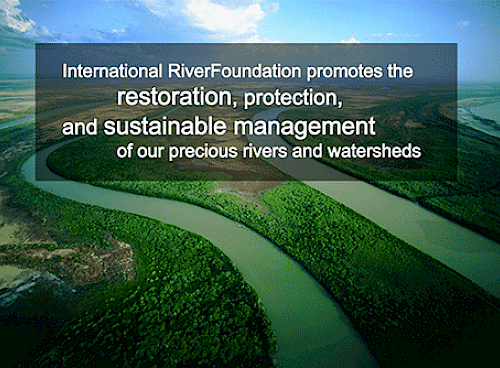
The Willamette River was the fourteenth recipient of the International Riverprize. Europe, Asia, Australia and North America river management stories have garnered Riverprizes in previous years. The Theiss International Riverprize was originally sponsored by the Theiss company, an international construction company, headquartered in Brisbane, Australia. As part of the Healthy Waterways campaign in Southeast Queensland, Australia, we had created a Riverfestival. The Riverfestival had activities around the river including fireworks, music and paddling. As part of this festival, a Riversymposium was created to share river restoration stories from around the world. When we created the Riverfestival, it came at a time when the Brisbane River was being actively mined for sand and gravel, as well as being the recipient of only rudimentary sewage treatment. Within a short amount of time, the dredging was disallowed and sewage was treated in an increasingly stringent manner. As part of this transformation, the people and buildings changed their orientation and began facing toward the river, instead of away from the river with their backs to the river.
As part of the river restoration journey in Southeast Queensland, a desire to share stories with practitioners around the world stimulated the creation of the Riversymposium, beginning in 1998. Then the Lord Mayor of Brisbane, Jim Soorley, approached the CEO of Theiss, Martin Albrecht, and suggested that they partner to form the Nobel Prize for river management. And thus was born the Theiss International Riverprize, first awarded in 1999 at the Riversymposium to the River Mersey. This river in Northwest England is located at the original center of the industrial revolution with the cities of Manchester and Liverpool in the watershed. The Grand River in Ontario, Canada was the second recipient of the International Riverprize and since then it has been awarded in different parts of the world.
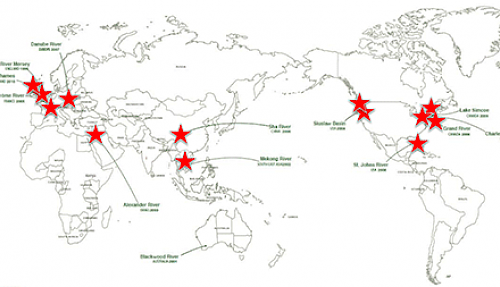
The unifying theme of the Riverprize recipients is demonstrated achievement in river restoration efforts--the prize was not awarded for having great plans or good intentions, rather measurable results. We learned that each of these Riverprize recipients had effectively engaged the community, and were invariably team efforts. It was always a struggle to determine who in the team would receive the credit, because the credit was always shared among many individuals. These champions came together from a variety of walks of life. The Chinese Sha River was led by a doctor who was tired of treating patients for river related ailments. A teacher in France led the effort to restore the Drome River, and an architect in Israel led the effort to restore the Alexander River, for example.
After meeting the winners of all the various recipients of the International Riverprize, I have observed three features common to all of the teams who won. First, the obvious and infective passion that they developed about their river; "I care about this river!". They publicly expressed that passion. Second, they gained a working knowledge about the river. This knowledge was disseminated and shared by the community, not held by a select few. The third feature was leadership to effect behavior change. It is not easy to change the way people do things, and leadership was needed to change paradigms.
Out of the many stories that can be shared about the Riverprize journeys, I am going to select two stories that illustrate the paradigms shifts that can occur. The first story is the River Mersey restoration, illustrated by a poster that read "This is Manchester, not Venice". The River Mersey was so contaminated that the city of Liverpool had unsuccessfully attempted to give away some riverfront property with a significant cash inducement. The fetid river had devalued the riverfront property. Today, that land that couldn't be given away has a four star hotel located on the shore of the River Mersey. People now swim in the river and catch salmon which have returned. Another story is that of the Alexander River that flowed from Palestinean territory into Israeli territory, the largest river in Israel. They had to restore the river using large temporary fences to shield the workers from snipers. They have created a Peace Park along the shores of the river to commemorate the coming together of these two cultures in the combined effort to restore the river.
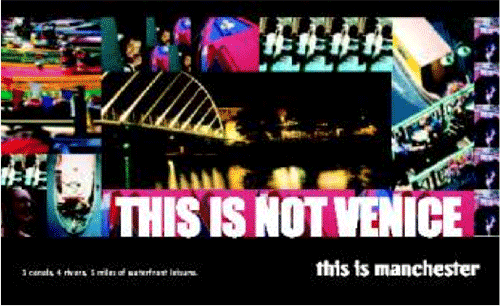
The Theiss International Riverprize showcases big efforts in river restoration. I have been hearing about big things here in the Willamette valley; the Big Pipe, the Big Float, and I want to emphasize that the Riverprize is a Big Deal. It gives recognition and raises recognition beyond your region in a global sense. It does provide a Big Check, but that is not as important as the credibility that you receive for garnering this prize. You can build on this Riverprize by joining a global network of 'winners and twinners'--previous and future recipients and their twinning partners from all over the globe. You are now members of this select fraternity of people who care, people who know and people who are leading the way forward.
The twinning program is where Riverprize recipients partner with groups with less resources from different places in the world. The Twinning Program offers opportunities to transform both the twinning partners as well as people in your program. Examples of twinning projects which served to create watershed councils in Eastern Russia, creating a youth network in Nairobi, Kenya, creating landcare groups in remote northern Australia, and develop international watershed management in South America. These twinning programs offer opportunities to be catalytic on a global scale.
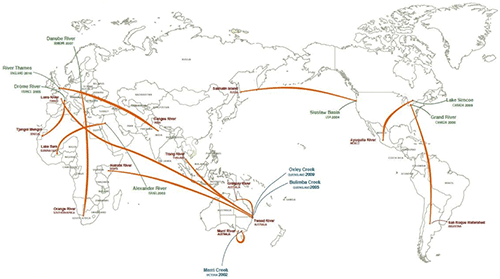
The International Riversymposium, held annually, will be in Brisbane, Australia. Please come. Let us show you the river that was a mine and a sewer historically, and has been transformed into riverside parks, CityCat ferries, bicycle pathways. Join us at the Riversymposium as an opportunity to share knowledge and wisdom, not just data and information, with other river practitioners. The Riversymposium also offers an opportunity to showcase your program, work with global leaders, share ideas and catalyze more river restoration globally. Through the sponsored delegate program, you get to meet practitioners from around the world, providing a international opportunity for sharing. The other notable feature of the Riversymposium is that it is a fun conference to attend.
The International Riverfoundation has a some passionate River Ambassadors, like Johnny Sundstrom from the Siuslaw River, Oregon and Amos Brandeis from the Alexander River, Israel. One of these River Ambassadors, Philip Weller, from the International Commission for the Protection of the Danube River, has been instrumental in establishing the European Riverprize which will be inaugurated in 2013. Our vision is to have the European Riverprize, the Australian Riverprize and to establish a North American and Asian Riverprize so that the continental Riverprizes can feed into the a International Riverprize. We hope to fill in the global map of Riverprizes, twinning programs and Riversymposium delegates to create a global network of best practices for river management.
We have collected the stories of the International Riverprize winners into a River Journeys book, and plan to update this book with the Willamette story. A quote from this book is the following: It is clear that all Theiss Riverprize winners are special people who have embarked on a long-term, complex and often difficult river journey. These journeys are not complete, but they have many talented people with them and they are equal to the challenges--both anticipated and unforeseen--facing them. Like early explorers of these rivers, they are operating without a well-defined map, but their dedication, commitment and courage will allow them to chart their course over time to achieve even greater successes in addressing their future challenges.
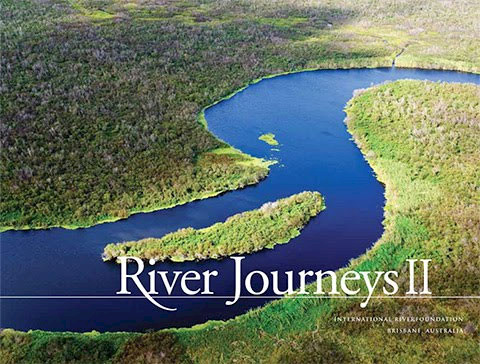
I would like to encourage you to continue that journey. The Riverprize statue that you now possess is a depiction of an Australian Aboriginal water carrier, or coolamon. As you continue your journey, I hope that you can take that coolamon to new levels. I hope someday to rejoin you in a Big Float or other big event and wish you well in your future efforts on behalf of the Willamette River. Thank you.
About the author
Bill Dennison

Dr. Bill Dennison is a Professor of Marine Science and Vice President for Science Application at the University of Maryland Center for Environmental Science.

